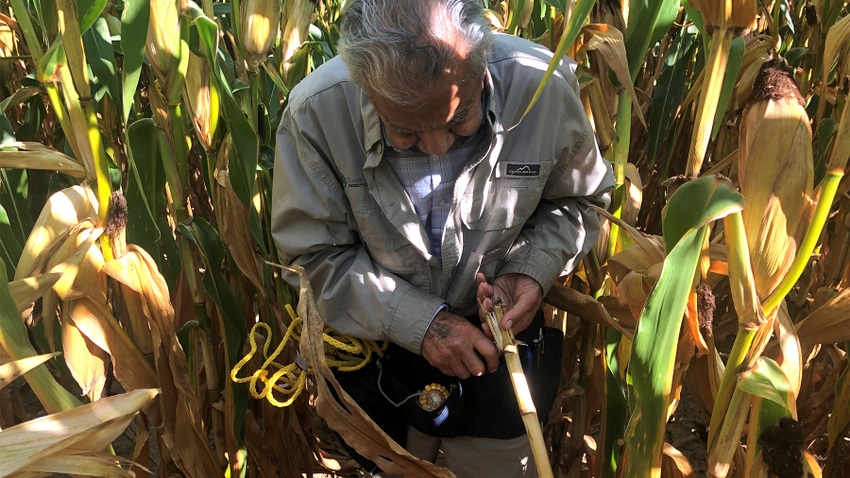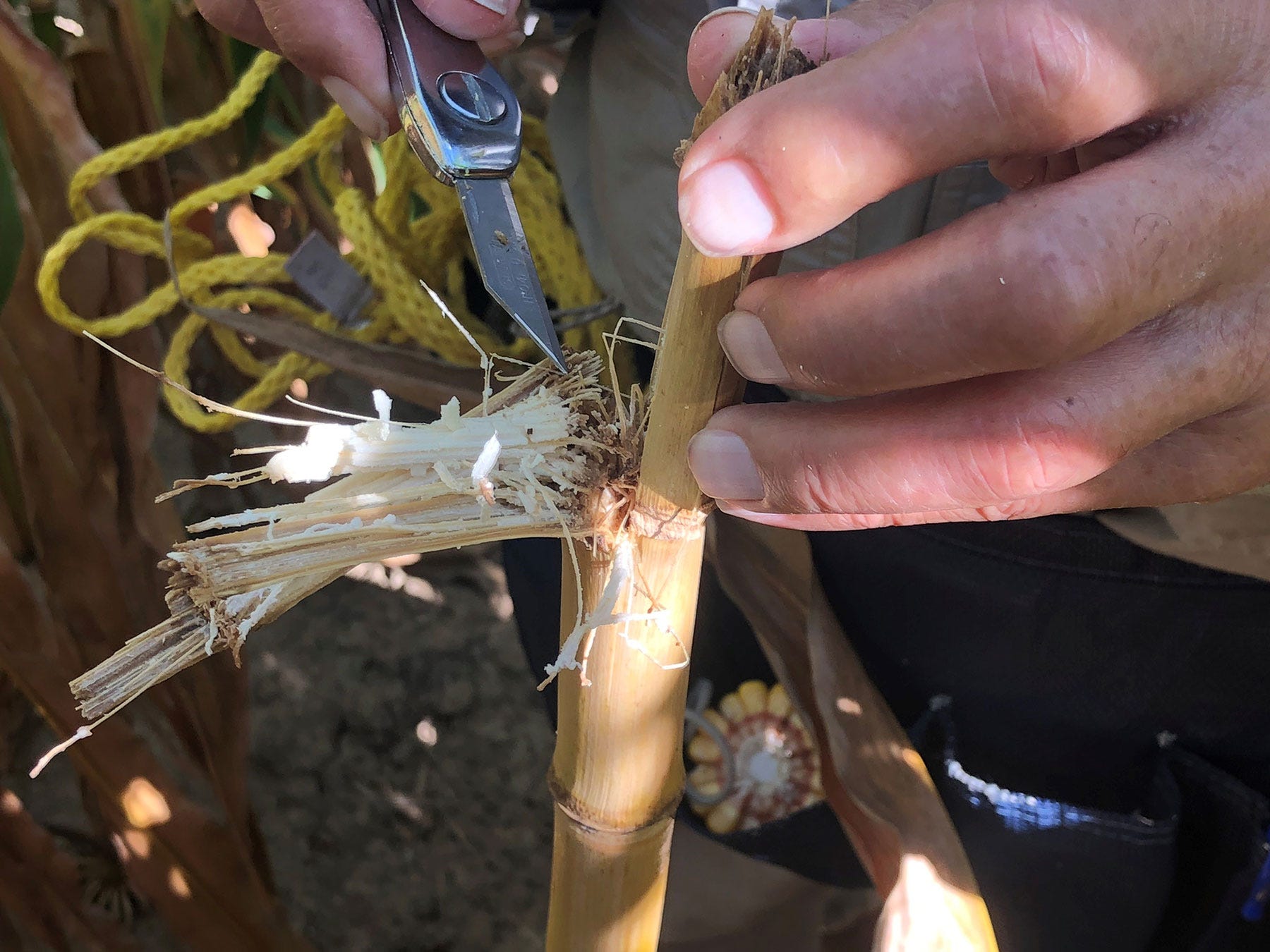
Dave Nanda walked into a cornfield in mid-September and immediately determined it was about 10 days from reaching black layer. To do this, he broke open an ear and checked a few kernels, scraping carefully with his knife at the tip of kernels, looking for a black layer of cells.
“Once that layer forms, corn is physiologically mature,” says Nanda, director of genetics for Seed Genetics Direct. “After that point, no sugars can move in or out of the corn kernel.”
When the black layer forms, grain moisture is typically in the 30% to 35% range. Harvest, depending upon when you choose to harvest and dry, is usually two to three weeks away.
“So, the next thing I did was start evaluating stalks for lodging potential,” Nanda explains. “You want to know if stalk rot is moving in, and if so, how many plants are affected.”
Here’s how Nanda routinely evaluates stalk lodging potential and presence of stalk rot:
1. Perform the push test. “Pick a spot at random, and start walking down a row, pushing each stalk briskly to one side,” Nanda says. “Do it for 100 stalks in a row. Then go back the other way, doing it on the row next to it. The number of stalks that don’t come back out of 100 is the percentage likely already infected by stalk rot.”
You can also pinch stalks, feeling to see if they are still firm or if tissue is decaying. Nanda believes the push test is easier, faster and more efficient.
2. Evaluate your results. In this case, Nanda found that an average of 3 stalks per 100, or 3%, failed the test. “We would expect to have a small amount of stalk rot at that stage, especially since the field underwent drought stress during the season,” he says. “That is not an alarming number.”
Nanda suggests checking each field on the farm, then noting which fields, if any, have higher, more alarming numbers of stalks already showing lodging potential. Other things being equal, those fields would be the ones to mark for harvest first.
3. Search for rot in stalks. Once a stalk doesn’t snap back, Nanda examines it for signs of stalk rot. “Slice into the stalk and see what the pith looks like,” he says. “You are looking for discoloration. Most often, you will find it at one or more nodes on the stalk. Once a node gets infected, it becomes a weak joint in the plant, more subject to lodging on windy or stormy days.”

FINDING THE CAUSE: Discolored tissue in the pith at a node inside the stalk indicates this stalk is infected with stalk rot, Dave Nanda explains.
4. Identify the disease. Some diseases leave distinctive marks, while others are not as easy to identify. “Anthracnose stalk rot produces black specks on the outside of the stalk and blackish discoloration inside,” Nanda notes. “We didn’t see that on this stalk. Gibberella produces pinkish discoloration. We didn’t see pinks. It was likely diplodia, but we can’t tell for sure.”
For a more positive identification, stalk samples can be sent to diagnostic labs. Most universities offer this service.
About the Author(s)
You May Also Like




